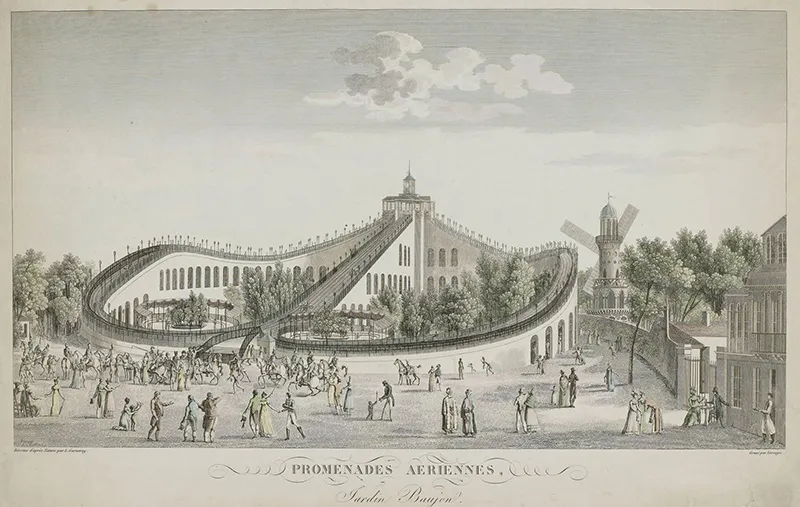Hello ladies and gents this is the Viking telling you that today we are talking about
Fun Facts About Roller Coasters
For starters, one of the oldest coasters in America carried coal before it carried passengers
On August 16, 1898, Edwin Prescott, a roller coaster designer from Massachusetts, was granted a patent for an improvement to roller coasters that ride enthusiasts have come to take for granted—the vertical loop. While the roller coaster depicted in the patent’s illustration, and later realized as the Loop the Loop coaster at Coney Island, wasn’t the first to invert riders in a loop, it did usher in the safer, more comfortable and now prevailing elliptical-shaped loop.
Prescott’s Loop the Loop was surprisingly unsuccessful—mostly due to the fact that only one car with four passengers could ride the coaster at a time. It closed in 1910 after only nine years in operation. But the inventor’s pioneering spirit is honored every August 16 on National Roller Coaster Day.
To mark the occasion, we bring you 5 fun facts about roller coasters.
1. The American roller coaster was invented to save America from Satan.
It may be hard to believe with roller coasters named Dare Devil Dive, Steel Vengeance and The Beast, but the rides were initially developed as a distraction from Satan’s temptations.
In 1884, disgusted with the uprise of hedonistic amusements like saloons and brothels, LaMarcus Adna Thompson invented the Switchback Gravity Railway, a patented coaster that visitors to Brooklyn’s Coney Island could ride for just five cents. Because it was situated at Coney Island, Thompson is often referred to as the “Father of the American Rollercoaster” for establishing its connection to amusement parks. His initial invention, however, isn’t like the thrill-inducers we know today.
These were gravity-powered, slow-moving cars that faced outward, rather than forward, so one could enjoy a constructed scene as the car coasted at less than six miles per hour. These scenes would often be built to emulate beautiful landscapes around the world; Thompson constructed one of the Swiss Alps, for instance, and another of Venetian canals.
2. One of the earliest coasters in America carried coal before it carried thrill seekers.
Predating Thompson’s Satan-distractor by a few decades was a railway that served dual purposes: a coal carrier in the morning and a joy ride in the afternoon. The Mauch Chunk Switchback Railway was a gravity railway built in 1827 to haul coal about nine miles between coal mines. Gravity forced the cars carrying one-and-a-half tons of coal downhill, which were later brought back up by mules when emptied. With that much weight behind them, they could reach 50 miles per hour through the Lehigh Valley. As any curious human would ponder when gazing upon such a zippy device, tourists saw this and naturally thought: “I want to go to there.” In 1873, at its peak, Mauch Chunk carried 30,478 adrenaline-rushed passengers—each for just 75 cents.
3. “Russian mountains” predated roller coasters—and Catherine the Great improved them.
"Russian mountains" helped to inspire early roller coasters of Europe, like the Promenades Aeriennes that opened in Paris in 1817. Wikipedia
In the 15th century, Russians really upped the ante on sledding, building giant, wooden slides—some up to 70 feet tall and 100 feet in length—that they covered in slick ice. Mounted on an ice block with a straw seat, riders could reach up to 50 miles per hour.
Popularized in upper class circles, Catherine II of Russia had one installed on her property—but hers wasn’t limited to winter enjoyment. It had wheels that fit into grooved wooden rails, putting the “roller” in roller coaster and allowing the thrill to continue into summer months, as Wired reports. Some say her clout gave roller coasters the credibility to spread into Europe by the late 18th and early 19th centuries.
4. Roller coaster loops are never circular.
Sure, some roller coasters can loop-the-loop, but have you ever noticed it’s never perfectly circular? To oversimplify things, the loop isn’t a circle itself, it’s roughly the part where two circles hypothetically overlap, sort of like the middle of a Venn diagram.
Secondly, some physics: Centripetal force is what holds keeps you from falling out of roller coaster while it’s upside down. Simply speaking, this means when you’re traveling on a curved path and velocity is pushing you forward, you’re also being pulled toward the curve’s central point. When roller coasters are designed, the engineers’ first job is to establish how fast they want you to go. Taking centripetal force into consideration will dictate the shape and size of the loop. (For numbers folks out there, you can find a very in-depth mathematical breakdown on Gizmodo.)
5. Riding Big Thunder Mountain Railroad at Disney World could help dislodge kidney stones.
You just found out you have kidney stones, what’s next? Go to Disney World! Prescribing patients prone to the condition a trip to the amusement park as a form of preventative care sounds like a pretty wild idea, but wild enough that it works.
While wearing a backpack containing a transparent, 3D-printed kidney with a fake stone inside, researchers rode Disney World’s Big Thunder Mountain Railroad coaster about 20 times to study how the stone would move with all those ups and downs, according to a 2016 study in The Journal of the American Osteopathic Association. (The “work” won them a beloved Ig Nobel Prize.) About two-thirds of the time, the kidney stone passed—as long as the rider was seated at the back of the coaster.
And as always have a chilled day from the Viking

Comments
Post a Comment